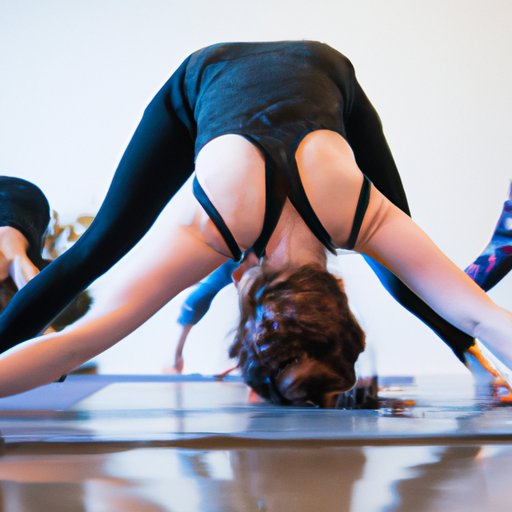Introduction
Vinyasa yoga is a dynamic and flowing yoga practice that emphasizes the connection between breath and movement. Whether you’re a seasoned yogi or a beginner, practicing vinyasa yoga can offer countless benefits for both mind and body. In this article, we’ll explore the origin and benefits of vinyasa yoga, as well as provide a beginner’s guide to practicing and personalizing your own vinyasa practice.
The Origin and Benefits of Vinyasa Yoga: Exploring the Flow of Breath and Movement
Vinyasa yoga is rooted in the ancient traditions of yoga and has become increasingly popular in the West over the last few decades. The word “vinyasa” is derived from the Sanskrit term “nyasa,” which means “to place,” and “vi,” which means “in a special way.” The practice of vinyasa yoga involves linking breath with movement in a continuous flow of poses, creating a dynamic and meditative practice.
One of the primary benefits of vinyasa yoga is its focus on the flow of breath and movement. This encourages practitioners to be present and mindful in the present moment, helping to combat stress and anxiety. Additionally, vinyasa yoga can help improve physical strength, flexibility, and balance, as well as boost overall wellbeing.
Flow Like a River: Beginners Guide to Practicing Vinyasa Yoga
If you’re new to yoga or new to vinyasa, it’s important to start with the basics. It can be tempting to jump right in and try to keep up with more advanced practitioners, but building a strong foundation is key to a safe and effective practice. Focus on building strength, improving flexibility, and learning proper alignment in foundational poses before moving on to more complex poses.
Some essential poses for beginners to vinyasa yoga include downward-facing dog, plank, and warrior one. These poses will help you build strength in your arms, core, and legs while also improving flexibility in your spine and hips.
When getting started with vinyasa yoga, it can be helpful to find a qualified instructor who can guide you through the basics and help you build a safe and effective practice. Additionally, be sure to listen to your body and modify poses as needed.
Discovering Mindfulness through Vinyasa Yoga: A Comprehensive Explanation
Mindfulness is the practice of staying present and aware in the current moment, without judgment. Vinyasa yoga is an excellent practice for cultivating mindfulness, as it encourages practitioners to focus on the flow of breath and movement in each pose. By staying present and mindful in the present moment, practitioners can reduce stress and anxiety and improve overall wellbeing.
To incorporate mindfulness into your vinyasa practice, try focusing on your breath as you move through each pose. Pay attention to the inhale and exhale as you flow from one pose to the next. Additionally, try bringing your awareness to any sensations in your body as you move, without judgment or criticism.
5 Benefits of Incorporating Vinyasa Yoga In Your Daily Routine
Incorporating vinyasa yoga into your daily routine can offer countless benefits for your mind and body. Some of these benefits include:
- Improved flexibility and balance: Vinyasa yoga helps to lengthen and stretch muscles, improving overall flexibility and balance.
- Lower stress levels: The focus on breath and movement in vinyasa yoga can help reduce stress and anxiety.
- Boosted energy and mood: The meditative and invigorating nature of vinyasa yoga can boost energy levels and improve mood.
- Enhanced physical strength: The continuous flow of vinyasa yoga can help build strength and stamina in the body.
- Improved immune system function: The movement and breath work in vinyasa yoga can help stimulate the lymphatic system and improve immune system function.
The Art of Sequencing: Crafting your Own Vinyasa Yoga Practice
Personalizing your vinyasa practice is an excellent way to make the practice work for your individual needs and goals. A well-rounded vinyasa practice should include standing poses, balancing poses, seated poses, and inversions, but the exact sequencing will vary depending on individual needs and goals.
When crafting your own vinyasa practice, it’s important to start with a warm-up sequence to prepare the body for movement and prevent injury. From there, you can move into a flow sequence that includes a variety of poses to work on specific areas of the body. End your practice with a cool-down sequence and savasana to help the body and mind relax.
Conclusion
Vinyasa yoga is a beautiful and dynamic practice that offers countless benefits for the body and mind. By focusing on the flow of breath and movement, practitioners can cultivate mindfulness, reduce stress and anxiety, and improve overall wellbeing. Whether you’re a beginner or an experienced yogi, vinyasa yoga is a practice that can be tailored to suit your individual needs and goals.
